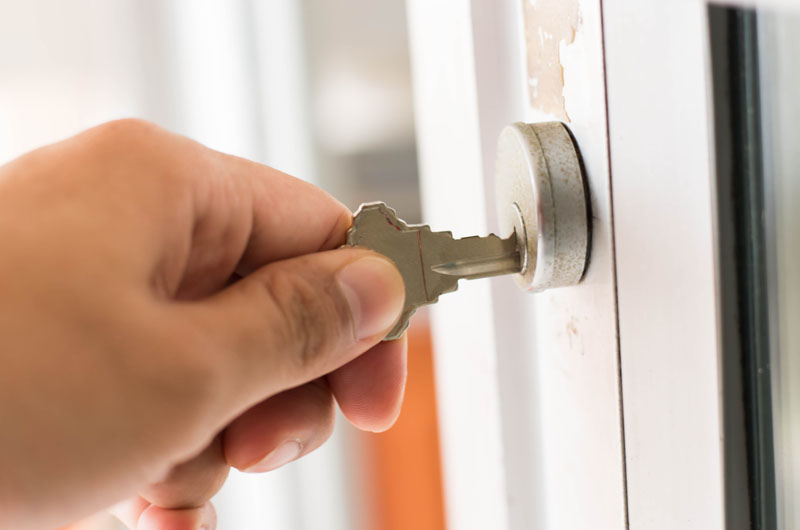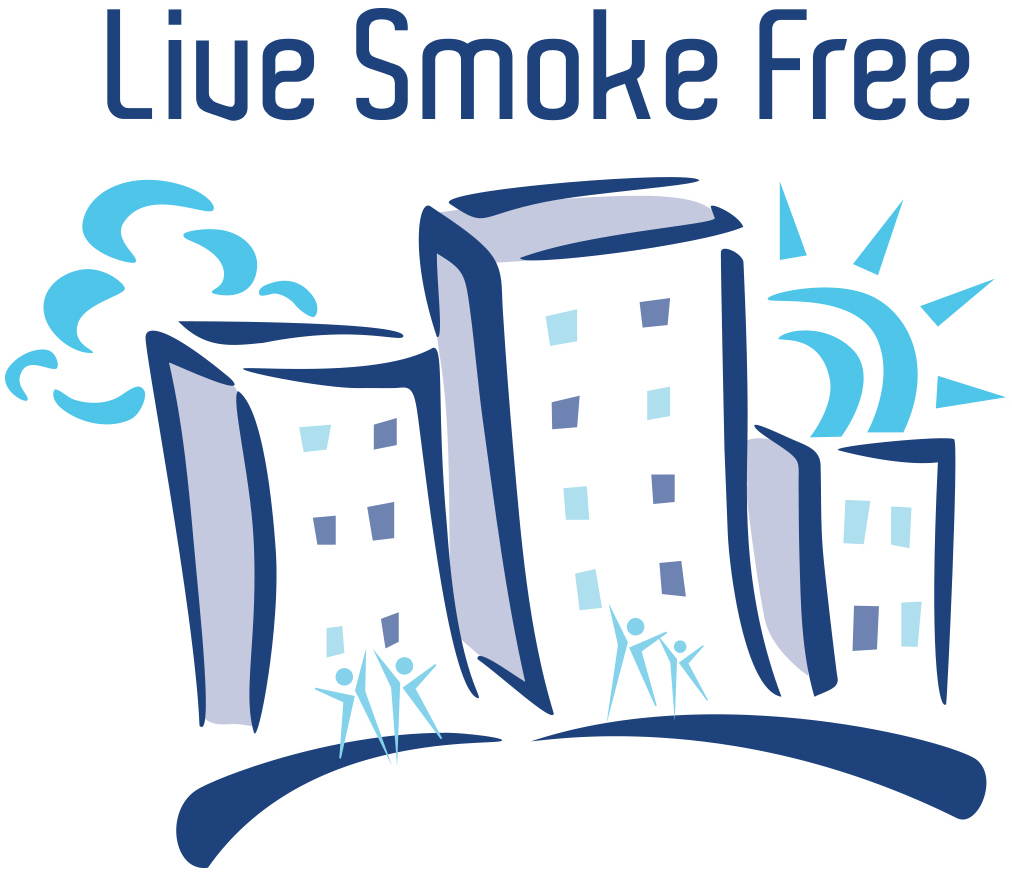RENTERS
Are you experiencing secondhand smoke coming into your unit from another source in your apartment building? You are not alone. Approximately 17% of Minnesota nonsmoking renters report smelling smoke somewhere in their home. If you live in a condominium, town home, co-op, or other type of common interest community, please access our Common Interest Communities materials or contact Live Smoke Free for further information.

Thinking about Quitting Smoking? Know Someone who Is?
Quit Partner is Minnesota’s free way to quit nicotine, including smoking, vaping and chewing. Call 1-800-QUITNOW or visit www.QuitPartnerMN.com.
Visit our cessation page to learn about ways to share cessation resources in your building.

Even if you do not allow smoking in your unit, secondhand smoke can still find its way into your home. Secondhand smoke can drift through:
- Open windows and doorways
- Shared air and heating vents
- Electrical outlets
- Cracks in plaster and sheet rock
- Gaps around pipes and other structural openings
- Baseboards and under carpeting

Live Smoke Free can help residents who are suffering from secondhand smoke exposure in their rental unit. We can provide you with:
- Strategies for how to talk to your neighbors and property manager about the problem
- Legal facts regarding smoke-free apartment policies
- Temporary fixes you can try in order to get some short-term relief. *Though we do caution that the only way to completely eliminate exposure to secondhand smoke is by having a smoke-free building.
- Information including our “What to Know Before You Rent” and “Secondhand Smoke in Your Apartment” brochures for renters

Search our Smoke-Free Housing Directory to find smoke-free rental buildings all over Minnesota.
We encourage you to print out and share our materials with your neighbors and property manager. You may also want to check out the property managers’ section for information on how your property manager can adopt a smoke-free building. Contact Live Smoke Free if you have specific questions or if you would like to receive printed materials for your property manager or neighbors.
Strategies and Steps to Eliminate Secondhand Smoke in Your Apartment
See Live Smoke Free’s brochure Enjoying Smoke-Free Air in Your Apartment for more suggestions on eliminating secondhand smoke in your apartment.

Document the Problem
Determine the source of the secondhand smoke.
- When do you smell smoke: all the time, only in the evening or morning?
- Where is the smoke entering your unit?
- Where do you think it is coming from?
- Keep a log of when and where in your unit you smell smoke.
Make a list of the solutions you’ve tried already.
- What steps have you taken? View our Temporary Fixes section below for short-term solutions.
- Fans, air fresheners, and other “smoke eaters” will only mask the problem, but trying some temporary solutions might help you illustrate the situation to your property manager.
Talk with your neighbors.
- Are your neighbors experiencing the same problem? Will they talk to the property manager with you?
- If you feel comfortable doing so, consider approaching your neighbor who smokes and politely voice your concerns. Focus on solutions, such as asking them to smoke outside and away from the building.
- Keep track of all conversations and correspondence.
Keep track of all symptoms and illnesses.
- Document any health problems you and your family are experiencing as a result of secondhand smoke in your apartment.
- Health problems may include ear infections, sore throats, asthma attacks, and bronchitis.
- Ask your health care provider to write a letter stating that the secondhand smoke causes your family to be sick.

Talk to Your Building Management
Write a letter to your building manager or property owner.
- Explain your problem and offer solutions.
- If appropriate, include a copy of a letter from your doctor explaining your health problems.
Keep copies of any correspondence.
- Follow up by approaching your property manager to discuss the situation.
- Be positive, polite, and stick to the issue.
- Ask your property manager and neighbors to work together to solve the problem instead of getting angry or arguing.
Provide information.
- Give your property manager information on the dangers of being exposed to secondhand smoke.
- Explain the benefits of having a smoke-free building.
Offer solutions.
- Work with your property manager and offer to brainstorm or implement solutions.
- Possible solutions include:
1 – Conduct a resident survey.
2 – Hold a residents’ meeting.
3 – Relocate to a different building on the property or a different part of the building (either you or the person who is smoking).
4 – End your lease early so you can move to a smoke-free building.
Emphasize that building owners can legally make their buildings smoke free.
- All HUD public housing in the U.S. is required to have a smoke free policy as of July 30, 2018 (learn more here)
- For other HUD (Housing and Urban Development) units, you can share with your property manager the HUD notices that show HUD encourages smoke-free policies.
- Point out that changing “House Rules” may be easier to accomplish than making a formal lease change.
Suggest that smoke-free units can be established.
- For current renters, a smoke-free policy can be signed during each renter’s lease renewal.
- New renters can start off smoke free.

Work with an Outside Authority
Contact Live Smoke Free.
- Live Smoke Free can provide you with information, help you write letters, or suggest further steps to take.
Consider contacting the following:
- Your building’s owners (if different than the management)
- Your local health department
- HOME Line Tenant Advocates hotline at 612-728-5767
- HUD’s Multifamily Housing Complaint line at 1-800-685-8470
- The Minnesota Attorney General’s Office at 1-800-657-3787
Share your story.
- Contact local elected officials such as a city council member, a county commissioner, or a state legislator. A sample letter is available.
- To find your legislative districts, go to http://pollfinder.sos.state.mn.us. To search for a list of your legislators, go to www.leg.state.mn.us.
Research your legal options.
- Read about some of your legal options in the Legal Information for Renters section.
- Live Smoke Free has a directory of conflict mediation and legal aid services. If you have questions about the services in this directory, contact Live Smoke Free.
- Search for an attorney at www.lawhelpmn.org, which is an online directory of legal resources for low-income Minnesotans.
Temporary Fixes to Reduce Secondhand Smoke in Your Unit
The only way to completely eliminate secondhand smoke exposure in a building is by adopting a smoke-free policy for your building. The 2006 Surgeon General’s Report, “The Health Consequences of Involuntary Exposure to Tobacco Smoke,” concluded that there is no risk-free level of secondhand smoke, and the only way to protect people from the dangers of secondhand smoke is to eliminate the smoke exposure.
However, there are some things that you can try immediately to reduce the level of secondhand smoke exposure you are experiencing. Record when and where in your unit you attempt these strategies.
For suggestions on how to completely eliminate secondhand smoke from your unit, see the Strategies for Renters page and the Enjoying Smoke-Free Air in Your Apartment brochure.
- Pads and Seals. Smoke can travel through all kinds of spaces, including: around electrical outlets, power switches, baseboards, vents, and other small openings. Hardware stores often sell outlet seals and other ways to temporarily patch openings. You can also try blocking the openings with heavy padding.
- Doors and Windows. Gaps under doorways or around door and window frames can allow smoke into your unit. You can buy special door sweeps and window weather stripping to help reduce smoke transfer.
- Fans and Air Cleaners. Running a fan may help move the smoke outdoors or move outdoor air into your unit. The success of running a fan may depend on other factors like the direction of the wind outside or the direction of a draft inside. Air cleaners often mask the smoke odor but do not rid a unit of smoke itself. Be aware that the problem may seem better, but you have not necessarily stopped the source of the problem.
- Fill Openings. There are many cracks and gaps in apartment floors and walls. Remember that an apartment is one building divided into many units. This means that air can travel throughout the entire building by means of gaps made for wiring, plumbing, vents, and other structural necessities. Tape, caulk, and latex foam may be used to fill some holes and seal around pipes. You may not be able to see or access all of the gaps in a unit or building, but filling some of the gaps may help reduce smoke in your unit.
- Repair Vents. Vents in kitchens and bathrooms may have vent check valves to stop odors from moving from one unit to another. These valves may have to be repaired or replaced.
- Heating and Air Systems. Problems with heating and air systems may allow smoke to travel to other units. These systems may have to be inspected and repaired.
NOTE: Some of these temporary fixes require modifications to the unit. Do not attempt any major repair work to the unit without first getting written permission or help from the property manager. Your lease may tell you what kinds of repair work you are allowed to do on your unit.
Legal Information for Renters
Live Smoke Free has created a directory of conflict mediation and legal resources available for renters. More information regarding legal rights can be found from the Public Health Law Center.
